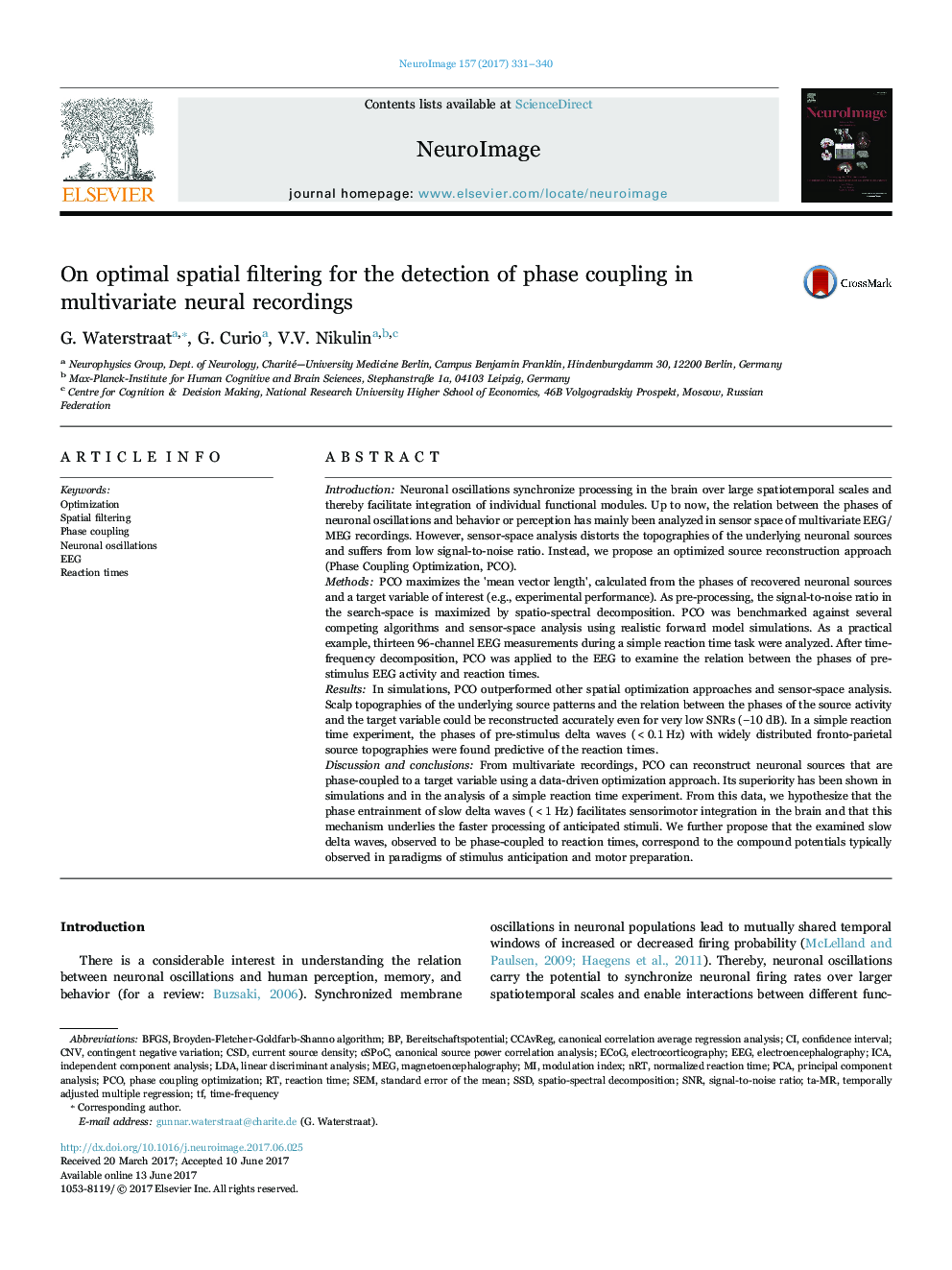| کد مقاله | کد نشریه | سال انتشار | مقاله انگلیسی | نسخه تمام متن |
|---|---|---|---|---|
| 5630920 | 1580853 | 2017 | 10 صفحه PDF | دانلود رایگان |
IntroductionNeuronal oscillations synchronize processing in the brain over large spatiotemporal scales and thereby facilitate integration of individual functional modules. Up to now, the relation between the phases of neuronal oscillations and behavior or perception has mainly been analyzed in sensor space of multivariate EEG/MEG recordings. However, sensor-space analysis distorts the topographies of the underlying neuronal sources and suffers from low signal-to-noise ratio. Instead, we propose an optimized source reconstruction approach (Phase Coupling Optimization, PCO).MethodsPCO maximizes the 'mean vector length', calculated from the phases of recovered neuronal sources and a target variable of interest (e.g., experimental performance). As pre-processing, the signal-to-noise ratio in the search-space is maximized by spatio-spectral decomposition. PCO was benchmarked against several competing algorithms and sensor-space analysis using realistic forward model simulations. As a practical example, thirteen 96-channel EEG measurements during a simple reaction time task were analyzed. After time-frequency decomposition, PCO was applied to the EEG to examine the relation between the phases of pre-stimulus EEG activity and reaction times.ResultsIn simulations, PCO outperformed other spatial optimization approaches and sensor-space analysis. Scalp topographies of the underlying source patterns and the relation between the phases of the source activity and the target variable could be reconstructed accurately even for very low SNRs (â10Â dB). In a simple reaction time experiment, the phases of pre-stimulus delta waves (<0.1Â Hz) with widely distributed fronto-parietal source topographies were found predictive of the reaction times.Discussion and conclusionsFrom multivariate recordings, PCO can reconstruct neuronal sources that are phase-coupled to a target variable using a data-driven optimization approach. Its superiority has been shown in simulations and in the analysis of a simple reaction time experiment. From this data, we hypothesize that the phase entrainment of slow delta waves (<1Â Hz) facilitates sensorimotor integration in the brain and that this mechanism underlies the faster processing of anticipated stimuli. We further propose that the examined slow delta waves, observed to be phase-coupled to reaction times, correspond to the compound potentials typically observed in paradigms of stimulus anticipation and motor preparation.
Journal: NeuroImage - Volume 157, 15 August 2017, Pages 331-340
